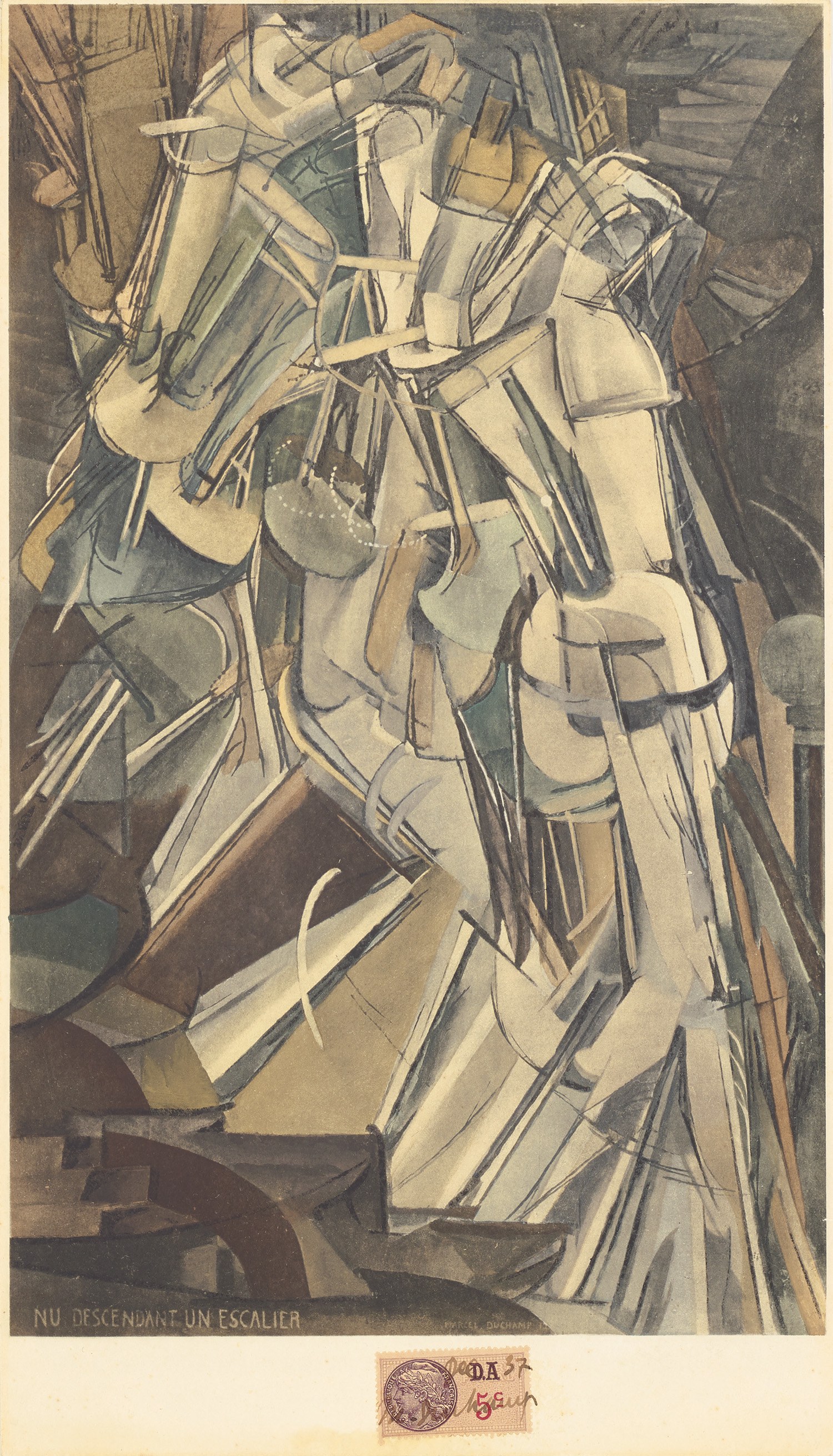

9
馬素.杜尚
Nu déscendant un escalier No. 2 (Nude Descending a Staircase No. 2) (S. 458)
1937
Pochoir-coloured reproduction, on wove paper, with full margins.
I. 32.1 x 19.7 cm (12 5/8 x 7 3/4 in.)
S. 35.2 x 20 cm (13 7/8 x 7 7/8 in.)
S. 35.2 x 20 cm (13 7/8 x 7 7/8 in.)
Signed and dated in blue ink on the French 5-centime revenue stamp, from the small unnumbered edition, created for the artist's La Boîte-en-Valise, Paris, 1941, framed.